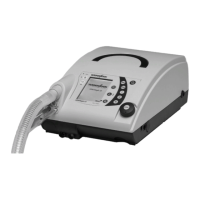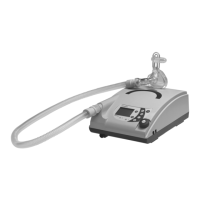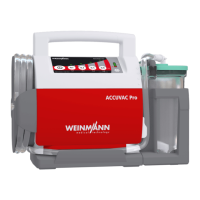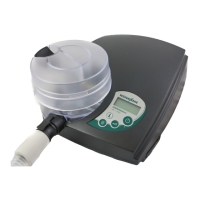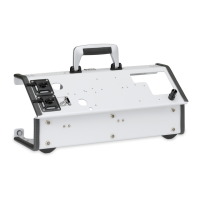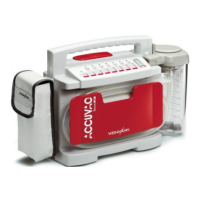Note:
• When planning your time, be aware that at low or very high outdoor
temperatures, battery running time is considerably reduced.
3.1.4 Oxygen supply
Warning!
• If oxygen is being supplied to the respiratory flow, smoking and naked flames
are forbidden. Risk of fire. The oxygen can accumulate in clothing, bed linen or
hair. It can only be removed by thorough ventilation.
• It is essential to follow the safety instructions in the instructions for your oxygen
system.
• Too high or too low an oxygen supply can be toxic and lead to severe
complications. We therefore recommend monitoring the oxygen supply with an
oxygen sensor. This oxygen sensor can replace neither blood gas analysis nor
direct FiO
2
measurement.
• Risk of fire. Always shut off the oxygen supply first at the end of therapy. Then
leave the therapy device to run for a short time before turning it off, otherwise
some residual oxygen will remain in the device. In the event of a fault, this could
lead to a risk of fire.
• To supply oxygen, use only the therapy device connection provided for this
purpose. Never supply oxygen via the patient/ventilator interface or the
T-adapter, otherwise the oxygen supply cannot be switched off automatically if
a fault occurs.
Note:
• Supplying oxygen via a connection not intended for this purpose leads to an
erroneous volume display, as the oxygen flow cannot be included in the
measurement.
3.1.5 Transport/accessories/spare parts/maintenance
Caution!
• Be aware that pressure at the patient connection opening may rise during
exhalation if you connect accessories (e.g. bacteria filter or respiratory air
humidifier).
• The UPS works only if the internal battery is present and charged. Recourse can
only be had to the replaceable battery obtainable as an accessory during an
